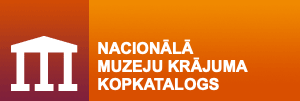Museum of Jelgava

About Museum
Museum

One of the rare buildings that still remains after the 2nd World War is Academia Petrina.
Exterior’s walls of Academia Petrina are decorated with commemorative plaques, that tells visitors about many important that have happened in the inside. The building Academia Petrina was the first higher education facility in Latvia’s territory established in 1775 by Duke Peter, thus the name Academia Petrina or Peter’s Academy. In 1815, the first scientific society in the Baltics, the Courland Society for Literature and Art, was established here. The same society worked on a museum. In 1818, Society’s efforts resulted in the opening of Courland Provincial Museum, first museum outside of Riga, the second oldest museum in territory of Latvia.
This building for the most part was a school, and during the 19th and 20th centuries, it was attended by prominent political and cultural figures – the first president of Latvia Jāņis Čakste, the first president of Latvia Antanas Smetona, father of Latvian theatre Ādolfs Alunāns, Juris Alunāns one of the first Latvian linguists, and others. However, now the building houses the Museum of Jelgava which collects older and newer objects that tells museum visitors about the long and eventful history of Jelgava.
History
Ģ. Eliass History and Art Museum of Jelgava has a complicated history which can not be always proved with legal documents.
In th 1818, private organisation the Courland Society for Literature and Art established Courland Provincial Museum.
For almost 100 years worked undisturbed collecting objects of cultural and historical value. However the 20th century brought the peaceful time to an end. Political changes – wars, fights for power, authoritarianism, nationalisation, centralisation, etc. – also left an impact on the museum. Because of unfriendly attitude towards Baltic Germans many repressive measurements took place – confiscation of the collections and handing them over to the state, firing the museum’s director in the 1930’s, and many other obstacles. During this period the state concentrated on centralisation – the idea was to give control of all museum outside of Riga to the State Historical Museum. Using Baltic German repatriation as an excuse the state closed Courland Provincial Museum. In the 29th of May 1940, gives and order to include Courland Provincial Museum’s collection in the collection of the State Historical Museum. After two months Soviet government changes Courland Provincial Museum’s status from “liquidated” to “nationalised”. However the State Historical Museum did not want to let go of recently acquired collections from other museum. From the December of 1940, all the museums in the state were part of the State Historical Museum, including the museum in Jelgava. Whether this decision was coordinated with the government will be left a puzzle. Documents, however, shows no proof that there was a museum in Jelgava during the first period of Soviet Union occupation (1940-1941) under the Jelgava Municipality.
During the German occupation (1941-1944) in November of 1943 Courland Provincial Museum celebrates its 125 year anniversary. Special exhibition was prepared by Historical Museum’s department of Jelgava. Most of the objects of the liquidated Courland Provincial Museum travel back from Riga – most of the collection is back together in the original building.
During the battles in Jelgava in 1944 the museum’s building was destroyed. What happened to the museum’s collection, no one really knows. Some were taken to Germany, some stolen. After civilian slowly started to return to the city, few volunteers with teacher Marija Akermane in charge, searched the museum’s rubble for objects. Nothing much was left.
Although renewed Soviet Union occupation was not interested in reviving cultural heritage of the past, museum’s tradition was strong in Jelgava. Besides Courland Provincial Museum there was another museum in the city – Semigallia Art Museum under Jelgava Municipality. Later this collection was given to the State Historical Museum’s Jelgava Department, and Latvian Art Museum. During German Occupation Semiagallia Museum worked again but as a private museum.
In 16th of December 1944, museum and library was reestablished on the corner of Uzvaras and Dzirnavu street, where the previous building of the museum was. Later in 1952 the museum was moved to the renovated Academia Petrina, museum’s director was historian Marija Akermane.
In various documents it is stated that the museum “resumed working”. It lets us know that it was not a new museum, but descendent of Courland Provincial Museum. In 1968 History and Art Museum of Jelgava organises and celebrates Courland Provincial Museum’s 150th anniversary thus strengthening the link between both museums.
Museum of Jelgava is basing its work on three fundamental blocks – collecting objects with cultural and historical value, restoration, gathering and researching historical sources.
Gita Grase
Director of the Museum
Collection
2019 |
– Objects in the collection at the end of the year: 97208, 80801 objects are in the main collections;
|
2020 |
– Objects in the collection at the end of the year: 99499, 82049 objects are in the main collections;
|
Collections of Museum of Jelgava:
-
Painter Ģederts Eliass and his family
-
The Courland Provincial Museum (archeology)
-
Museum material objects
-
Money and its equivalents
-
Medals. Phaleristic objects
-
Written objects (printed materials)
-
Written objects (documents, handwritings)
-
Illustrative objects
-
Audiovisual museum objects
-
Natural objects



